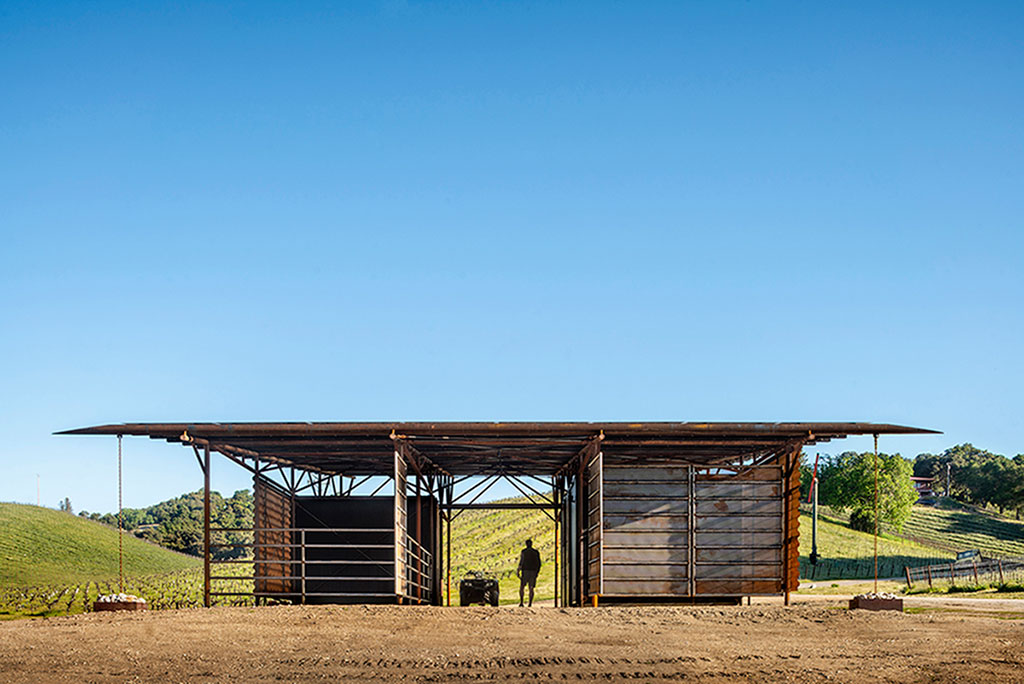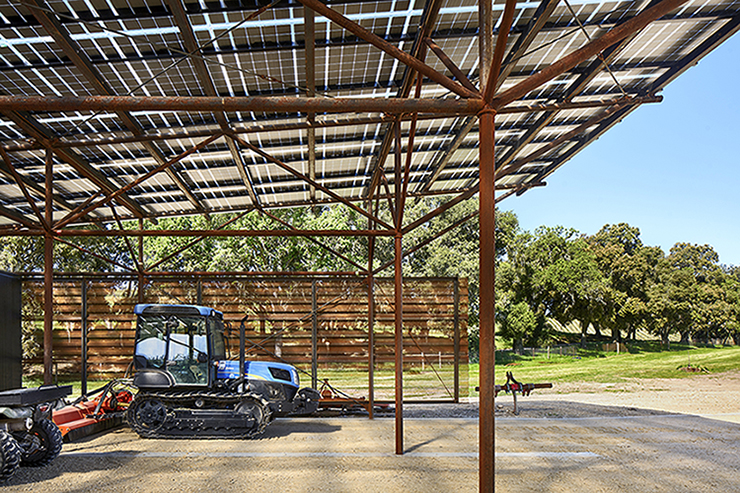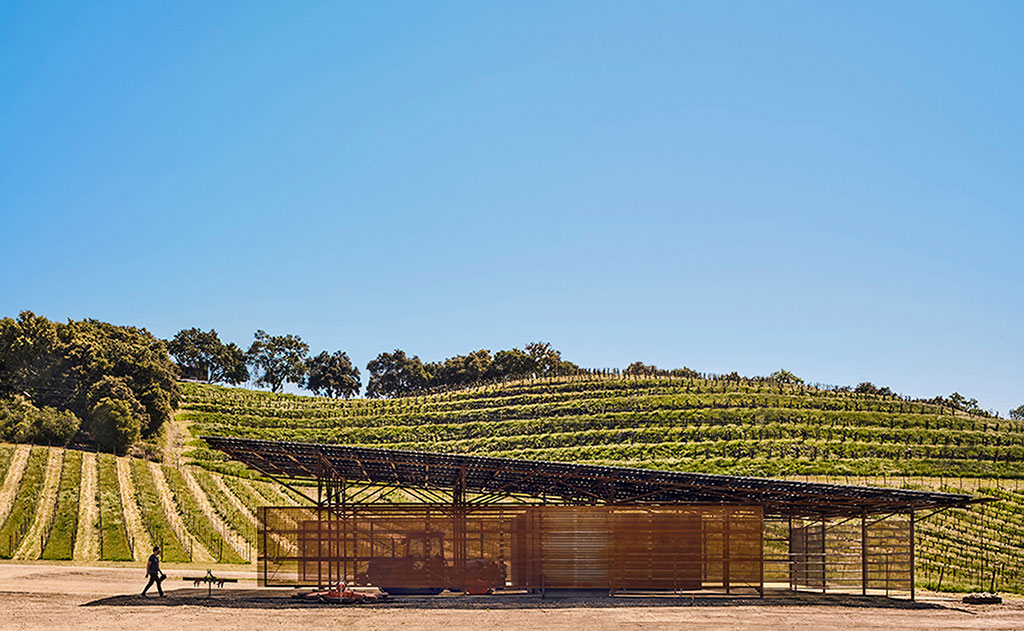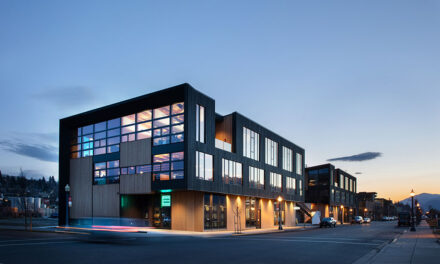Located in the Templeton Gap area of West Paso Robles, California, this simple agricultural storage structure rests at the toe of the 50-acre James Berry Vineyard and the adjacent winery sitting just over 800 feet away. This structure is completely self-sufficient and operates independently from the energy grid, maximizing the structure’s survivability and resilience. Designed as a modern pole barn, the reclaimed oil field drill stem pipe structure’s primary objectives are to provide an armature for a photovoltaic roof system that offsets more than 100% of power demands on the winery and to provide covered open-air storage for farming vehicles and their implements, workshop and maintenance space, and storage for livestock supplies.

A half pipe steel gutter directs rainfall to chain downspouts and cistern catch basins. Photo credit: Casey Dunn
Designed to harnesses the local climate to maximize cross ventilation, daylight and solar energy, the recycled oilfield pipe structure holds a laminated glass photovoltaic roof system that produces 1/3 more power than needed (roughly 87,000 kWh per year), eliminating the dependence of grid tied power for the winery and the vineyard irrigation well pumps through net metering. Utilizing the laminated glass solar modules as both the actual primary roof and the renewable energy generator, offset any additional costs to construct an additional roof with separately mounted crystalline solar panels.

The laminated glass PV modules provide solar harvesting and the primary roof covering. Photo credit: Casey Dunn
Minimalistic and salvaged materials were selected to withstand the particularly dry climate, for regional availability, long-term durability and to minimize the need for regular maintenance. The primary column and roof structure is constructed of welded Schedule 40 reclaimed drill stem pipe, in 2 inch, 3 inch and 3.5 inch diameters, and left to weather naturally. The lateral load resisting system, consists of diaphragm rod cross-bracing and vertical tension only cross-braced frames. Laminated glass solar modules, serving as both the solar system and the roofing, are supported on wood and WT steel flitch purlins welded to the pipe trusses. An 8 inch diameter Schedule 40 half-pipe gutter is situated at the low end of the roof to accommodate future rainwater harvesting. 22 gauge Western Rib Cor-Ten corrugated perforated steel panels provide shading and filtered privacy to equipment bays.

Wood storage and workshop spaces are clad with Ebonized Cedar paneling. Photo credit: Casey Dunn
Salvaged materials do more with less. Barn doors are clad in weathered steel off-cuts that were saved for reuse from the adjacent winery shoring walls, re-used in a “calico” pattern to fit the oddly shaped panels to tube steel framed door leafs. Storage boxes are skinned with stained cedar siding with the interiors clad with unfinished rotary cut Douglas Fir plywood. Foundations limit the amount of cast-in-place concrete by including pervious gravel paving for all open vehicle storage bays and livestock pens, maximizing the amount of rainwater that is filtered back through the soil into the watershed. In addition, providing an engineered deepened earthwork program allowed the structural foundation requirements to be more efficient with their utilization of cast-in-place concrete.
Sitting sentry as the foremost structure present upon entering the vineyard-lined property, the barn and its renewable energy system speak to the winery’s commitment to sustainability and subservience to the natural landscape.
Clayton & Little project team
Brian Korte AIA Partner/design lead
Josh Nieves, project team
Derek Klepac, project team
Brandon Tharp, project team
Consultant team
Clayton & Little (architecture)
SSG Structural Engineering (structural engineer)
Clayton & Little (lighting design)
Rarig Construction (contractor)
Pacific Energy (solar basis of design




